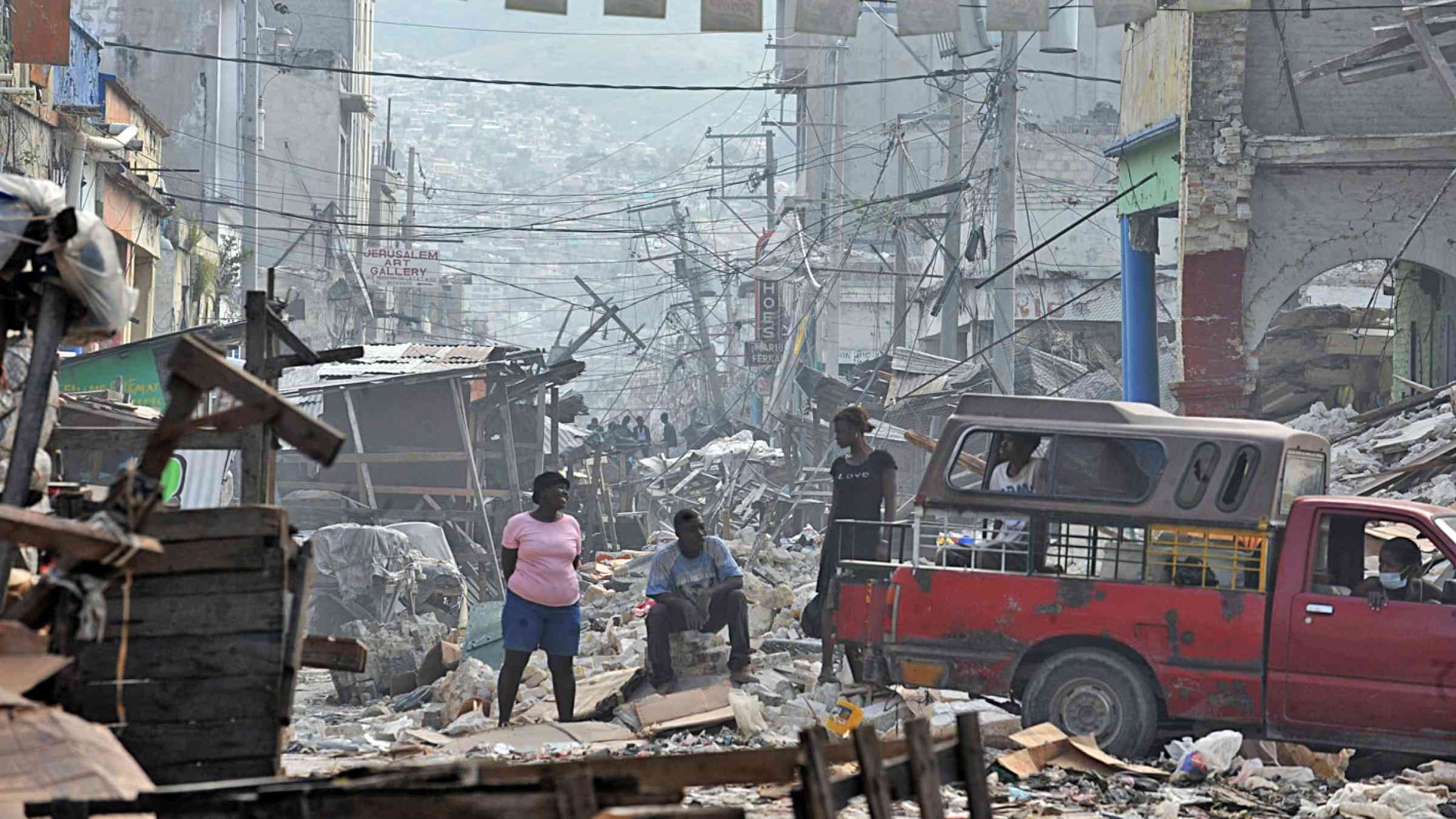Please help us improve PreventionWeb by taking this brief survey. Your input will allow us to better serve the needs of the DRR community.
All disaster risk is systemic, all disaster impact is systemic...but what does it mean?

An earthquake shakes the ground and buildings fall down. It may seem straightforward, but we know it’s more complicated than that.
Why are some disasters more damaging than others? What are the secondary effects of the damage? How do we assess damage when the effects of disaster reverberate across systems? How do we analyse risk when the drivers come from settlement patterns, inequality and poverty, building standards and enforcement, climate, public investment and regulation?
The United Nations Office for Disaster Risk Reduction (UNDRR), the International Science Council and the Risk Knowledge Action Network (Risk-KAN) explain how we should think differently about the composition of systemic risk in the new Briefing Note on Systemic Risk
Systemic impact in Haiti
When, on 12 January 2010, an earthquake in Haiti shook the ground and caused building to fall, more than 250,000 homes and 30,000 commercial buildings and many government buildings were badly damaged.
Of course, the damage went far beyond just buildings. Between 100,000 and 300,000 people were killed and more than three million directly affected. All hospitals in the capital were damaged, so too were all sea, air and land transportation systems, and communications infrastructure was incapacitated.
The minister of education said that the education system had “totally collapsed” leading to millions of lost school days. One-fifth of jobs vanished and the already weak economy foundered. A large-scale cholera outbreak emerged as sanitation and health systems struggled to regain their footing.
The impact was systemic. It not only impacted systems, but the damage to systems meant that the fundamental status of risk in Haiti had changed – the underlying conditions were different.
Risk had changed.
Disaster risk is always systemic
Globally interconnected disasters – like COVID-19, the climate emergency, the loss of biodiversity, and old and new conflicts – illustrate what was so clearly evident in Port-au-Prince.
Disaster risk has always been systemic and understanding risk in those terms must become the ‘new normal,’ explains the Briefing Note’s lead author, Jana Sillmann. Dr. Sillman, of the University of Hamburg, Germany, and the Center for International Climate Research, Norway, is co-chair of the Knowledge Action Network on Emergent Risks and Extreme Events (Risk KAN).
Areas for transdisciplinary collaboration
‘Understanding how risk is created and how its impacts can cascade across sectors and scales has been a major focus of research for some time. This paper provides a stocktaking of current concepts and understandings of systemic risk from a range of perspectives and identifies areas for transdisciplinary collaboration.’ said Anne-Sophie Stevance, Senior Science Officer at the International Science Council.
The Briefing Note on Systemic Risk argues that climate risk assessments and adaptation strategies that focus exclusively on known and easily quantified risks to individual nations and sectors are insufficient to deal with the systemic nature of risk with drivers like climate change that transcend simple metrics.
Toolbox approaches
The authors emphasise that no single approach can capture the total picture, given the complex and uncertain nature of risk – there is no single systemic risk assessment. Instead, the Briefing Note suggests the use of “toolbox approaches” that take an iterative approach to learning, using multiple lines of evidence and a range of methods and perspectives and most importantly, accepting and communicating uncertainty.
Moreover, toolbox approaches that are developed inclusively, with a broad set of stakeholders, can increase granularity, trust and participation at all levels.
A new Centre of Excellence
The latest IPCC report recognizes the complex interdependence of climate systems, ecosystems, biodiversity, and people, and the increasingly severe and interconnected risks that outpace our ability to adapt.
Recognizing these challenges, UNDRR partnered with the World Meteorological Organization (WMO) in 2020 to inaugurate a new Centre of Excellence for Climate and Disaster Resilience. The Centre of Excellence aims to orient leading science, policy design and capacity development in the interest of helping global, regional national and sub-national stakeholders to understand and plan for systemic challenges.
The Briefing Note on Systemic Risk will be a useful resource in helping to improve understanding of these challenges, and to guide appropriate planning.
Explore further
Also featured on
Please note: Content is displayed as last posted by a PreventionWeb community member or editor. The views expressed therein are not necessarily those of UNDRR, PreventionWeb, or its sponsors. See our terms of use
Is this page useful?
Yes No Report an issue on this pageThank you. If you have 2 minutes, we would benefit from additional feedback (link opens in a new window).